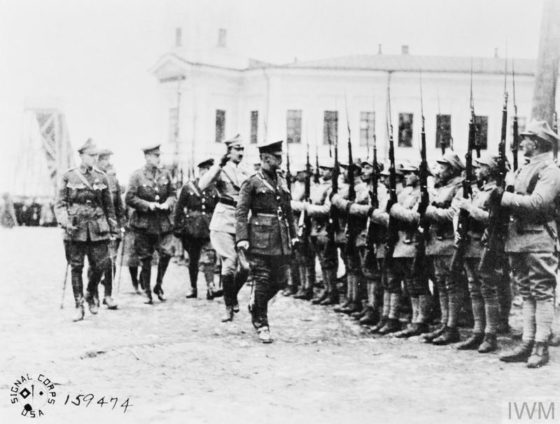
“Some Indian factions taking up arms for both the Union and the Confederacy.”
THE U.S. CIVIL WAR wasn’t just an internecine struggle between white Americans from the north and south. Native tribes throughout the United States were also swept up into the conflict. In fact, nearly 30,000 Native Americans fought on both sides in the War Between the States.
While some Indian nations chose to ally themselves with one side or the other, several, such as the Cherokee were themselves divided, with factions taking up arms for both the Union and the Confederacy. In some cases, warriors from the same tribes even would face each other across the battlefield.
Mr. Lincoln’s Warriors
While the United States spent the years leading up the Civil War using military force to suppress native tribes across the American frontier, a number of bands did support the Union when conflict erupted. Many of these friendly nations saw the war as an opportunity to demonstrate their loyalty to the United States and hopefully leverage their participation in the struggle to extract rewards late, such as more territory or favourable treaty concessions from Washington.
The Delaware, which had bands up and down the Atlantic seaboard as well as in Wisconsin and present-day Oklahoma, sent volunteers armed with muskets, scalping knives and tomahawks to serve in the U.S. Army. Typically, these volunteers worked as scouts, cavalry or guerrilla-style fighters as opposed to line infantry.
Other tribes to support the Union included Creeks, Seminole, Kickapoo, Seneca, Shawnee, Iroquois, Powhatan, Pequot, Huron, Ottawa, and Potawatomi nations.
Some of these volunteers, particularly those from regions like Kansas and the Indian Territory (modern day Oklahoma), were organized into Indian Home Guard units. Other natives were grouped into what were called United States Colored Troop (USCT) regiments – “colored” at the time being the catchall designation for both African Americans as well as natives. While many of these outfits were formed and operated along the western frontier, others fought with the Army of the Potomac in the eastern theatre as well.
One of these units, the 1st Michigan Sharpshooters, was comprised of volunteers from eastern and Great Lakes bands like Ottawa, Huron, Potawami and Ojibwa. The 1st Michigan fought with distinction in the Wilderness Campaign of 1864, Spotsylvania and captured hundreds of rebel troops near Petersburg.
One Native American named Ely Parker rose to the rank of general in the Union army during the war. A member of the Seneca nation, Parker went down in history for drafting the articles of surrender that would be signed by Robert E. Lee at the end of the war. A lawyer by trade, Parker, was once passed over for a military commission because of his race. Despite this, he would eventually go on to become one of General Ulysses S. Grant’s most trusted advisers. As Lee was signing the April, 1965 capitulation at Appomattox, the defeated general looked at Spencer and famously remarked: “I’m glad to see one real American is here.” “We’re all Americans, General,” Parker reportedly responded. [1]
Confederate Nations
Outnumbered and outgunned, the Confederate States Army hoped that the tribes residing within its borders might be compelled to help the rebellion.
The South actively recruited warriors from nations east of the Mississippi River, offering citizenship to tribes that sided with the Confederacy and even offered bands formal representation within the southern legislature. A recruiting centre for natives was established at Mobile, Alabama. Confederate Indians would fight at a number of engagements during the war. At the Battle of Pea Ridge, Arkansas in March, 1862, Union propagandists would make much out of the scalping of Union wounded at the hands of guerrillas.
A number of native nations saw advantage in siding with the Confederacy. Many members of the Choctaw tribe, which inhabited Florida, Mississippi, and Alabama found common cause with the South over the issue of slavery. The tribe owned as many as 6,000 African Americans and members had fears that Washington might force the Indians to give them up. Despite this, some Choctaws remained loyal to the United States.
Although being denied both weapons and equipment, as well as pay by Southern commanders, many groups of tribal warriors were organized into mounted units and fought for the Confederacy, largely in the west and Indian Territory.
Tribes, like the Cherokees, fought a civil war of their own within the larger conflict. Like the Choctaws, the Cherokees were divided over whether to stand with the Union or fight for the Confederacy. While the majority of Cherokee bands honoured existing treaties with the Federal government, nearly a third joined the southern cause.
A Cherokee band under the command of a chief named Stand Waite would fight throughout Indian Territory. Waite would eventually become a full general in the Confederate army. Along with his Cherokee brigade, he would continue the fight against the Union for a full two months after the end of the war in the east.
Despite being offered amnesty by Washington for their part in the Confederate war effort, many tribes, such as the Cherokee were unofficially branded as traitors by the federal government following the conflict and were punitively deprived of territory and rights.










I hate to say that I knew none of this. I’m particularly surprised that I didn’t know about Ely Parker. Of course I haven’t studied the war much. Thanks for this info.